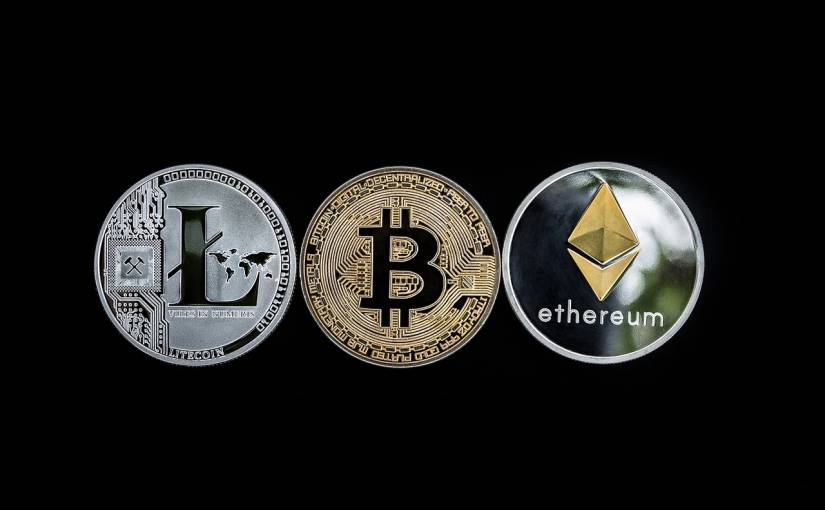Since 2020, the crypto market has experienced the most important bear season in its history (coindesk), with the toughest wave persisting throughout 2022. From an all-time high of nearly $69,000 back in November 2021, bitcoin now trades at around $20,000. And that’s only because it has made some recent gains. For weeks, the price hovered below that mark. The same goes for Ethereum, dropping from an all-time high of almost $5,000 to about $1,500 now. The story is even worse for altcoins as well as NFTs, which are mostly priced in cryptocurrency.
$2.2 trillion. That was the global cryptocurrency market cap when 2022 started. Twelve months later, the market cap is around $1 trillion.
This extended bear run has resurrected questions as to whether the whole crypto craze is a bubble after all. Yet, the peculiar challenges of the industry do not warrant an uncritical dismissal.
To understand the current crypto dip, it is important to explore all the past ways the market has fallen, with one starting between 2020 and 2021 after a relatively solid 2019. It all started with COVID-19, one might say, but the constant uncertainty of the past several months has brought the question to the fore as to the viability of the crypto economy amidst various global incidents and critical market variables.
Why the Dip?
Like every major downturn before this, the latest crypto market slump is due to multiple factors. On the one hand, there is the challenge of high inflation, which the Federal Reserve has failed to halt, despite increasing interest rates. The latest raise, to 3.9%, came on November 3, and experts predict that the rate might go as high as 5% by March 2023. Many retail investors who have come to believe in crypto as a hedge against inflation are coming to terms with how crypto behavior is similar to traditional asset classes, especially stocks.
On the other hand, the recent escalation of the Russia-Ukraine conflict was an abrupt new dimension to the geopolitical tension in Europe that has destabilized the market. Beyond that, the war has also exposed how vulnerable cryptocurrencies are to government regulation.
In creating bitcoin, Satoshi Nakamoto had hoped to be able to wrestle monetary control from governments and traditional financial institutions. And indeed, one of the popular uses of crypto has been in bypassing government restrictions.
However, all that has failed for Russian crypto holders, who have seen their ability to transact crypto restricted since the EU started hitting the country with sanctions. This has eroded much of the faith the public had in crypto, and, as such, contributed to it being valued less.
Nevertheless, some significant reasons for the dip are not systemic at all. For instance, incidents like the implosion of the Terra and LUNA ecosystem and the liquidation of Three Arrows Capital (3AC) are directly linked to falling investor confidence in the crypto market.
Moreover, before these challenges specific to this time, the crypto market faces some general obstacles that keep assets highly volatile, even when one would think that the market was already maturing. The simple reason is that cryptocurrencies are highly speculative assets by design and, therefore, structured for price swings. But due to the high risks that they bring, cryptocurrencies are also faced with persistent threats of (sometimes strangely stringent) regulations, and the lack of clarity across the board, talk less regularity, remains a bane to growth.
Additionally, it is notable that whales do manipulate market prices significantly. Therefore, the fact that many whales have been dumping their BTC this year can be felt on the larger market and particularly altcoins. Back in July, one of the richest whales even dumped a total of 78,484 BTC, worth a whopping $1,400,000,000 at the time.
Market Stability and Resilience
Amidst these sad tales, one ray of hope appears. For a market that is historically known to be highly volatile, BTC has shown some stability in the past several months in terms of the range of prices and the global market cap, which has been between $800 billion and $1.2 trillion since June. More so, bitcoin, in particular, has performed fairly better than assets such as stocks, gold, and even currencies such as the Euro and the British Pound.
Despite this resilience and a brief gain experienced recently (finally crossing the $20,000 mark), whether bitcoin will make a significant rally before the end of the year remains uncertain. Upcoming midterm elections, Federal Reserve meetings, and Consumer Price Indices reports would weigh in on the short-term direction of the cryptocurrency as well as the crypto market in general.
Don’t get your hopes too high, though. Deutsche Bank might have reported a rise to $28,000 by the end of the year. With a drastic change of fortune, the price should be in the range of $40,000 and $50,000 by 2023 and perhaps even finally hitting the $100,000 mark by 2025. But with less than eight weeks for 2022 to be over and challenges persisting, that seems uncertain now. In any case, bitcoin predictions are as volatile as the asset’s actual price (some predict as low as $10,000), so it’s best not to rely upon a single forecast.
How to Invest
A record 78% of bitcoin units haven’t been used for any transaction in the past half-year, signifying a strong HODL wave as holders look for opportunities to recoup their losses. The same applies to altcoins holders too, but the latter group mostly consists of traders taking short positions as against longer-term trades. As an expert notes, such a trend could lead to surprise price bounces, but due to larger economic events, as well as the bitcoin bear, no surprises have occurred yet.
In any case, you might buy the dip on crypto assets, HODL your current assets, or consider these alternative ways of investing in crypto without directly owning any crypto coins:
- Buy shares of crypto-related companies: If you are wary about investing in crypto assets, invest indirectly by purchasing the stocks of crypto-related companies from core crypto exchanges to businesses that merely support the sector by accepting crypto payments.
- Invest in Bitcoin ETFs: Bitcoin ETFs are themselves not permitted under existing regulations to trade bitcoins. However, they trade financial products such as futures contracts as well as assets anchored on the price of bitcoin.
- Trade crypto options: With BTC or ETH options, you get to trade without an obligation to own or sell the asset itself. In fact, as CoinDesk reports, BTC options are now at a neutral call-put skew, an indication that the dip will soon gradually recede. If you are not so hopeful, options let you trade on your speculations.
If you would rather trade crypto directly regardless, shifting from a ‘buy the dip’ mentality to a risk mitigation approach is the best long-term strategy. Expert recommendations for risk mitigation include popular advice such as diversifying your crypto portfolio with multiple altcoins, maintaining the 5% rule of crypto investing, and hodling despite FOMO pressure. Clearly, nothing out of the ordinary.
But there is a lot of promise to hold out for in the sector, especially considering how it ties into other innovative technologies such as web 3, decentralized finance, and the metaverse. In fact, according to opinions by tech execs, a crypto bear market can be a fantastic opportunity to launch tech startups, especially with fantastic opportunities in solving age-old fintech challenges using crypto and blockchain innovations.
Conclusion
So far, BTC has lost about 56% of its value since the beginning of 2022, and expectedly, other crypto coins, including altcoins, have followed suit. The short-term future of the crypto market might be bleak, but there are good reasons to maintain long-term hopes in the sector’s sustainability. One aspect that won’t go away so easily, though, is volatility.
But as long as we keep seeing higher highs and higher lows, as has been the case since around 2017, declaring that the crypto bubble has burst for good is only far-fetched.
Featured Image Credit: Provided by the Author; Pexels; Thank you!


















